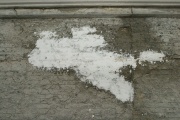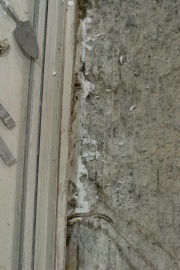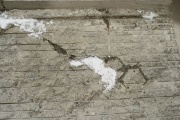Difference between revisions of "Filler"
| Line 1: | Line 1: | ||
[[File:DT 12-06-2004 12-Fills B3 and C3.jpg|thumb|Fill Material]] | [[File:DT 12-06-2004 12-Fills B3 and C3.jpg|thumb|Fill Material]] | ||
== Description == | == Description == | ||
| − | + | [[File:DT 9-20-2004 08-microballon fills.jpg|thumb|Microballoon fills]] | |
1) An inert powder added to a base material such as a paint, pigment, adhesive, plastic, paper, fabric, wax, or concrete. Fillers may serve multiple purposes such as: extend a matrix, dilute a color, decrease cost, provide bulk, increase strength, improve working properties or generally enhance performance. Examples of materials that are used as fillers are: [[acrylic resin|acrylic]], [[calcium carbonate|calcium carbonate]], [[barium sulfate|barium sulfate]], [[clay|clay]], [[diatomaceous earth|diatomaceous earth]], [[Glass fiber|glass fibers]], [[microballoon|glass spheres]], [[gypsum|gypsum]], [[sand|sand]], [[starch|starch]], [[talc|talc]], [[titanium dioxide|titanium dioxide]]. | 1) An inert powder added to a base material such as a paint, pigment, adhesive, plastic, paper, fabric, wax, or concrete. Fillers may serve multiple purposes such as: extend a matrix, dilute a color, decrease cost, provide bulk, increase strength, improve working properties or generally enhance performance. Examples of materials that are used as fillers are: [[acrylic resin|acrylic]], [[calcium carbonate|calcium carbonate]], [[barium sulfate|barium sulfate]], [[clay|clay]], [[diatomaceous earth|diatomaceous earth]], [[Glass fiber|glass fibers]], [[microballoon|glass spheres]], [[gypsum|gypsum]], [[sand|sand]], [[starch|starch]], [[talc|talc]], [[titanium dioxide|titanium dioxide]]. | ||
2) A preparation made for filling gaps, cracks, pores, or holes. Examples are [[dental_plaster|dental plaster]], [[Polyfilla|Polyfilla]], [[mastic_adhesive|mastic adhesive]], [[Plastic Wood|Plastic wood]], [[gesso|gesso]], [[Faststeel®|steel stick]], [[brummer|brummer stopper]], [[spackle|spackle]], and [[wax|wax]]. | 2) A preparation made for filling gaps, cracks, pores, or holes. Examples are [[dental_plaster|dental plaster]], [[Polyfilla|Polyfilla]], [[mastic_adhesive|mastic adhesive]], [[Plastic Wood|Plastic wood]], [[gesso|gesso]], [[Faststeel®|steel stick]], [[brummer|brummer stopper]], [[spackle|spackle]], and [[wax|wax]]. | ||
| − | [[File:DT 9- | + | [[File:DT 9-29-2004 08-B72 and microballoon fills.jpg|thumb|Paraloid B-72 and microballoon fills]] |
| − | |||
== Synonyms and Related Terms == | == Synonyms and Related Terms == | ||
fill; mastic (Fr.); charge (Fr.); relleno (Esp.); carga (Port.); diluent; extender; reinforcing agent; gap filling adhesive; cement; lute; filling compound; mastic | fill; mastic (Fr.); charge (Fr.); relleno (Esp.); carga (Port.); diluent; extender; reinforcing agent; gap filling adhesive; cement; lute; filling compound; mastic | ||
| − | == | + | ==Resources and Citations== |
| − | + | * J.Thornton, "A brief History and Review of the early Practice and Materials of Gap-Filling in the West" JAIC 37, p. 3-32, 1998. | |
| − | J.Thornton, "A brief History and Review of the early Practice and Materials of Gap-Filling in the West" JAIC 37, p. 3-32, 1998. | ||
| − | |||
| − | |||
| − | |||
| − | |||
| − | |||
| − | |||
| − | |||
| − | |||
| − | |||
* Ralph Mayer, ''A Dictionary of Art Terms and Techniques'', Harper and Row Publishers, New York, 1969 (also 1945 printing) | * Ralph Mayer, ''A Dictionary of Art Terms and Techniques'', Harper and Row Publishers, New York, 1969 (also 1945 printing) | ||
Revision as of 07:59, 28 August 2020
Description
1) An inert powder added to a base material such as a paint, pigment, adhesive, plastic, paper, fabric, wax, or concrete. Fillers may serve multiple purposes such as: extend a matrix, dilute a color, decrease cost, provide bulk, increase strength, improve working properties or generally enhance performance. Examples of materials that are used as fillers are: acrylic, Calcium carbonate, Barium sulfate, Clay, Diatomaceous earth, glass fibers, glass spheres, Gypsum, Sand, Starch, Talc, Titanium dioxide.
2) A preparation made for filling gaps, cracks, pores, or holes. Examples are Dental plaster, Polyfilla, Mastic adhesive, Plastic wood, Gesso, steel stick, brummer stopper, Spackle, and Wax.
Synonyms and Related Terms
fill; mastic (Fr.); charge (Fr.); relleno (Esp.); carga (Port.); diluent; extender; reinforcing agent; gap filling adhesive; cement; lute; filling compound; mastic
Resources and Citations
- J.Thornton, "A brief History and Review of the early Practice and Materials of Gap-Filling in the West" JAIC 37, p. 3-32, 1998.
- Ralph Mayer, A Dictionary of Art Terms and Techniques, Harper and Row Publishers, New York, 1969 (also 1945 printing)
- Theodore J. Reinhart, 'Glossary of Terms', Engineered Plastics, ASM International, 1988
- Richard S. Lewis, Hawley's Condensed Chemical Dictionary, Van Nostrand Reinhold, New York, 10th ed., 1993
- ASTM, "Standard Terminology Relating to Paint, Varnish, Lacquer and Related Products", Annual Book of ASTM Standards, Section 6, Paints, Related Coatings and Aromatics, ASTM, D16, 7-Jan, Jul-96
- Hoechst Celanese Corporation, Dictionary of Fiber & Textile Technology (older version called Man-made Fiber and Textile Dictionary, 1965), Hoechst Celanese Corporation, Charlotte NC, 1990
- Tom Rowland, Noel Riley, A-Z Guide to Cleaning, Conserving and Repairing Antiques, Constable and Co., Ltd., London, 1981
- Matt Roberts, Don Etherington, Bookbinding and the Conservation of Books: a Dictionary of Descriptive Terminology, U.S. Government Printing Office, Washington DC, 1982
- Dictionary of Building Preservation, Ward Bucher, ed., John Wiley & Sons, Inc., New York City, 1996
- Art and Architecture Thesaurus Online, http://www.getty.edu/research/tools/vocabulary/aat/, J. Paul Getty Trust, Los Angeles, 2000


